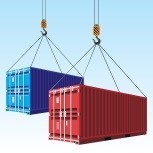The Australian Maritime Safety Authority (AMSA) has today issued the following notice:
AMSA focus on shipper compliance with Verified Gross Mass (VGM) requirements.
(Friday, May 24, 2024).
AMSA has a current focus in Victoria to ensure shippers of containers are accurately measuring verified gross mass (VGM) through one of the two accepted methods, and that VGM is accurately and reliably recorded on shipping documents.

To inform a consolidated and holistic approach, AMSA is collaborating with safety-focussed stakeholders involved in the container supply chain, including Shipping Australia (SAL), Ports Victoria, Port of Melbourne Corporation, Freight & Trade Alliance (FTA), Australian Peak Shippers Association (APSA), and other relevant bodies, as well as relevant terminals.
What is Verified Gross Mass (VGM)?
Australian legislation has required shippers to provide an accurate gross mass on maritime shipping documents since 1994. Effective from 01 July 2016, with the SOLAS (Safety of Life at Sea) amendment covering container weighing regulations, a packed container is no longer be allowed to be loaded on board vessels unless its Verified Gross Mass (VGM) has been provided by the shipper to the ocean carriers and/or port terminal representatives prior to the load list cut-off date.
The regulation was adopted by the IMO (International Maritime Organization) to increase maritime safety and reduce the dangers to cargo, containers, and all those involved in container transport throughout the supply chain.
Methods of verifying gross mass
The shipper is obliged to verify the gross mass of the containers carrying their cargo by either of two permissible weighing methods before these containers can be loaded on a vessel.
Method 1
Requires weighing the container after it has been packed to determine the real weight of the container including tare. This will often involve using a weighbridge.

Weighing Containers
Method 2
Requires weighing the whole cargo and contents, including packing, and adding those weights to the container’s tare weight – as indicated on the door end of the container.

Weighing Cargo
In both methods, equipment meeting prescribed standards of accuracy must be used. The weighing equipment must either comply with existing requirements applicable to weighing equipment used for trade purposes under the National Measurement Act, or the equipment must be calibrated to accuracy standards approved by AMSA.
Do you have policies/procedures in place with your suppliers for the correct declaration of containerised cargo weight? The shipper must provide the gross mass as part of the cargo information. The shipper must also ensure that the gross mass of a cargo unit recorded on the shipping documents is accurate. The shipper must provide a VGM for both packed and empty containers.
Providing a VGM for a container allows the master of a vessel to plan ship loading. This ensures that the ship is stable, hull strength and stack weights are not exceeded and lashing arrangements are effective. Incorrectly declared weights can result in container collapse, personal injury, and damage to equipment.
Shippers should be aware that substantial penalties and potential shipment delays do apply for serious or wilful non-compliance and shipping lines have the right to penalise shippers for the misdeclaration of container weights.
See these related articles from our archives: Ensuring Correct Container Weight Declared and Penalties for Misdeclared Container Weight.
As licensed Customs Brokers and International Freight Forwarders, Colless Young professionally handles all your consignments, both sea cargo and airfreight, as well as the allied services of trucking and warehousing. We provide a complete range of import and export services, covering customs and quarantine clearance and any necessary treatments such as fumigation of cargo. We are based in Brisbane and offer logistics facilities through all Australian ports and airports.

